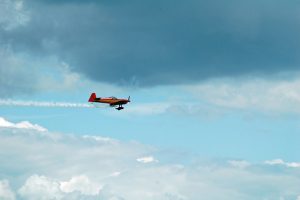
Wet wing airplanes are on the rise. They are used in both military and civilian aviation. Many narrow-body and wide-body civilian airliners, in fact, use a wet wing design.
What Is a Wet Wing Airplane?
A wet wing airplane is a type of airliner that features a sealed wing structure, which operates as a fuel tank. With the exception of all-electric airplanes — which are still in the early stages of development — all airplanes require a fuel tank. Wet wing airplanes store their fuel inside of their wings. The wings are essentially “wet” with fuel, hence the name “wet wing airplane.”
Other types of airplanes may feature a fuel tank inside of their wings, but this doesn’t mean they are the same as wet wing airplanes. Wet wing airplanes don’t have a dedicated fuel tank. Instead, large sections of the wings are hollow and used to store fuel. Fuel is stored inside of the wings, and it’s pumped to the engines as needed.
Advantages of Wet Wing Airplanes
Wet wing airplanes offer several advantages. With a wet wing design, airplanes typically weigh less than their counterparts that use a different wing design. A wet wing design means that the wings are hollow, which allows them to store fuel. Other types of airplanes may have solid or partially solid wings with a separate fuel tank. Regardless, wet wing airplanes are lightweight.
Another advantage of wet wing airplanes is safety. Fuel is stored within the hollow wings. If a leak occurs, fuel will typically leak out the exterior of the wings. It won’t leak into the cabin, nor will it will leak into the engine. Wet wing airplanes are considered safe because fuel will generally leak out of the exterior of the wings.
Disadvantages of Wet Wing Airplanes
There are disadvantages associated with wet wing airplanes as well. Fasteners, for instance, must be sealed to prevent fuel from leaking out of the wings. Most airplanes feature hundreds of thousands of fasteners, many of which are installed on the wings. If a fastener penetrates through a wing, it must be sealed. Otherwise, fuel may leak out of the wing.
Wet wing airplanes are also more difficult to maintain than their counterparts that use a different wing design. Fasteners, as well as other components on the wings, must be sealed. Sealants, of course, will degrade over time. To ensure the integrity of the wings remains intact, maintenance crews must replace sealants.



